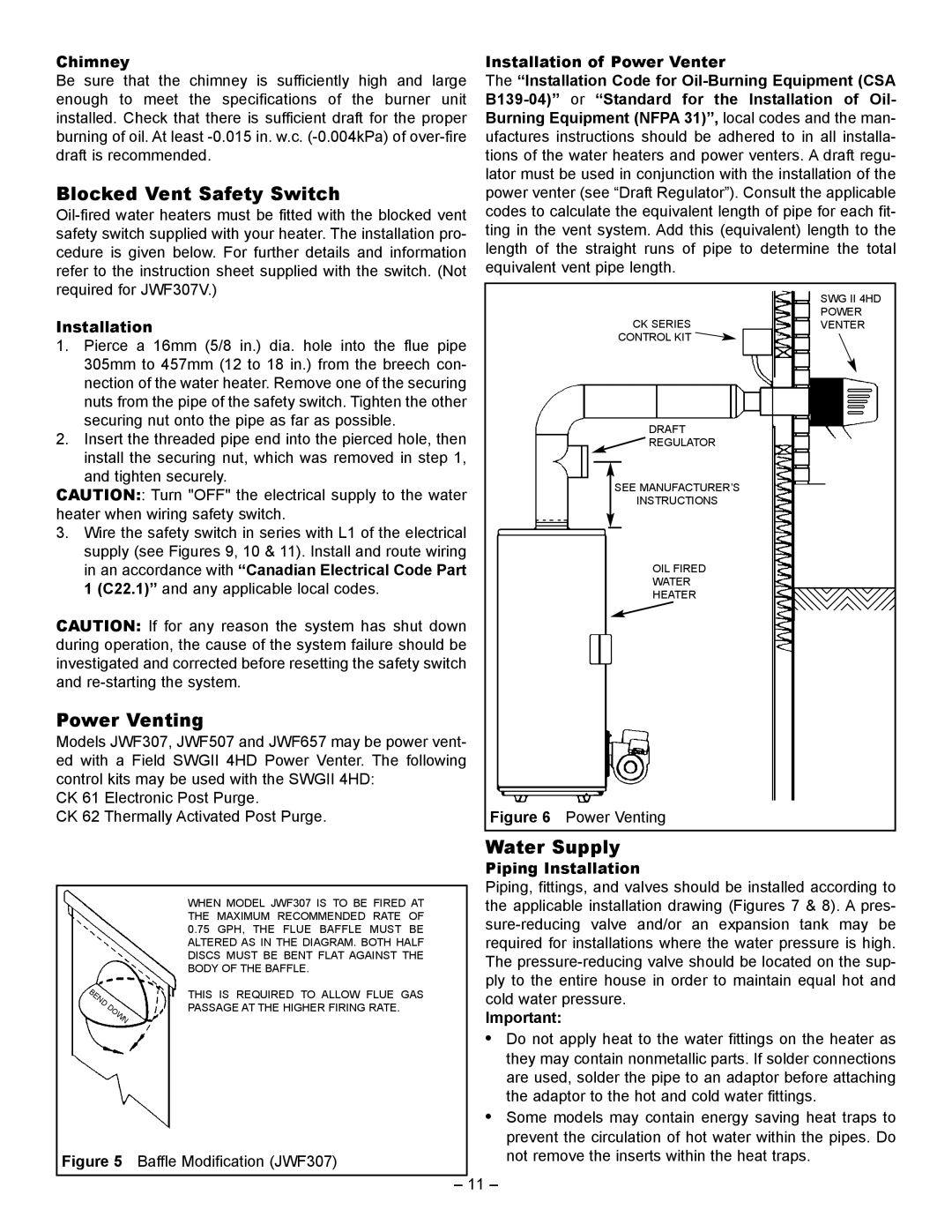JWF657, JWF507 specifications
The GSW JWF657 and JWF507 are two prominent models in the GSW lineup, known for their innovative features, advanced technologies, and robust characteristics. These models have been designed to cater to a wide range of applications, making them popular choices among users looking for efficient performance and reliability.Starting with the JWF657, this model boasts a high-capacity design, making it suitable for both residential and commercial use. One of its standout features is the energy-efficient motor that not only reduces power consumption but also enhances performance. The JWF657 includes a user-friendly control panel that allows for easy adjustments and settings, ensuring that users can operate the machine with minimal effort.
In terms of technology, the JWF657 integrates smart sensors that monitor operational parameters in real-time. This feature ensures that the equipment runs at optimal efficiency, reducing wear and tear while extending the lifespan of the product. Another noteworthy attribute is the noise reduction technology, which minimizes operational sound, making it ideal for environments where noise levels need to be kept to a minimum.
On the other hand, the JWF507 model is tailored for those who prioritize compactness without compromising performance. Its sleek design makes it a perfect fit for smaller spaces, while its powerful engine ensures that it can handle demanding tasks with ease. The JWF507 also includes advanced safety features such as automatic shut-off systems and overload protection, ensuring user safety and preventing equipment damage.
Both models are equipped with advanced filtering technologies that promote better air quality and energy conservation. They come with durable construction materials that can withstand harsh conditions, ensuring longevity and reliability. Additionally, routine maintenance is simplified with easy access points for cleaning and servicing.
In summary, the GSW JWF657 and JWF507 are engineered for excellence, combining innovative features with user-friendly designs to offer optimal performance. Whether you need high capacity or compact efficiency, these models stand out in the market for their reliability, safety features, and advanced technologies. Users can trust these products to deliver consistent results while being easy to maintain and operate.

